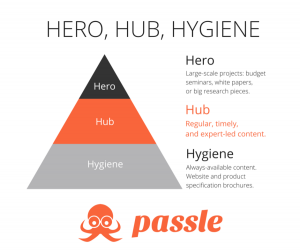While DAM platforms can help marketers deliver consistent experiences, there are questions of process, training and budget to answer before beginning the buying process.
Customers’ expectations are rising and marketers are working to meet those expectations with personalized content at a growing number of touchpoints — from social, to website to mobile app to drive-through menu to virtual reality experience. It’s that need to maintain a compliant, on-brand experience that is leading more marketers to adopt or upgrade digital asset management systems.
But before jumping into the purchase process, you should follow the same steps involved in any software adoption, including a comprehensive self-assessment of your organization’s business needs, staff capabilities, management support and financial resources.
The list of questions below should help you and your team to get started:
If you use martech that features lightweight DAM features — like content management software, a digital experience platform or a web content management system — you may not need additional functionality, depending on the sophistication and geographic scope of your marketing operations.
Companies with complex brand standards and legal approvals processes — those that operate in a highly-regulated industry like insurance, for example — will want to ensure the DAM can enable and provide documentation of the necessary signoffs.
Prioritize the available digital asset management features based on your most pressing business needs.
C-suite buy-in and appropriate staffing are crucial to the effectiveness of any digital asset management platform. Increasingly, martech platforms such as digital asset management are being managed by the CMO – and not the CTO or CIO. In either case, without the proper skilled human resources in place, the platform can end up becoming an expensive reservoir of untapped data with unfulfilled potential to increase revenue and improve customer experiences with your brand.
Different platform vendors provide different levels of customer service — from self-serve to full-serve — and strategic consulting services. It’s important to have an idea of where you fall on the spectrum before interviewing potential partners. Training is essential. If your organization chooses not to hire internal staff, then consider whether you need to use an add-on or third-party consulting services to effectively use the platform.
Many enterprises work with different partners for email, e-commerce, social media, paid search and display advertising. Investigate which systems the digital asset management vendor integrates with – whether natively or via API – and find out if they offer seamless reporting and/or execution capabilities with external vendors. If a connection can be made only through an API, ensure you have the internal or external resources to develop the necessary integration.
You want to know the specific holes in your current reporting that will be filled by additional functionality and, more importantly, you want to be sure that that extra information will drive better decisions and ultimately more revenue for your business.
Enterprise digital asset management platforms’ pricing can range from a few hundred dollars a year to nearly half a million a year. Examine your feature requirements closely, as modular pricing models mean vendors vary in their inclusion of some features as standard or add-on.
You should set your business goals for the digital asset management platform in advance to be able to benchmark success later on. Without them, justifying the expense of the platform or subsequent marketing campaigns to C-suite executives will be difficult.
The post Does your organization need a digital asset management platform? appeared first on MarTech.MarTech
(30)





